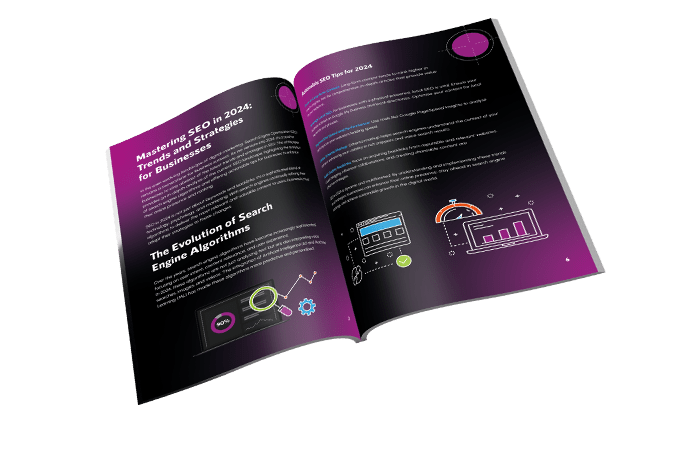News
Utilising Email Marketing to Nurture Leads and Boost Sales
Email marketing remains one of the most powerful tools at a business’s disposal. Despite the rise of social media, instant messaging, and other communication platforms, email marketing continues to deliver impressive results, particularly in terms of nurturing leads and boosting sales.
This article explores effective email marketing strategies to guide leads through the sales funnel, from segmentation and personalisation to automation.
The Power of Email Marketing
Email marketing offers an unparalleled level of direct communication with potential customers. Unlike social media or online advertisements, emails land directly in a prospect’s inbox, allowing businesses to deliver targeted, relevant messages.
According to the Data & Marketing Association (DMA) UK, email marketing boasts an average return on investment (ROI) of £42 for every £1 spent. This statistic underscores the efficiency and profitability of email marketing, particularly when executed with strategic precision.
Understanding the Sales Funnel
To harness the full potential of email marketing, businesses must understand the concept of the sales funnel. The sales funnel represents the journey a lead takes from initial awareness to the final purchase. The funnel is typically divided into several stages:
- Awareness: The lead becomes aware of the business and its offerings.
- Interest: The lead expresses interest in learning more about the product or service.
- Consideration: The lead evaluates the options and considers making a purchase.
- Intent: The lead shows intent to purchase by engaging with the business.
- Purchase: The lead completes the purchase, becoming a customer.
- Loyalty: The customer remains engaged and continues to purchase, potentially becoming a brand advocate.
Email marketing can effectively nurture leads at each stage of this funnel, guiding them from awareness to loyalty.
Segmentation: Targeting the Right Audience
Segmentation is the process of dividing an email list into distinct groups based on specific criteria. This allows businesses to send more relevant and personalised content to each group. Effective segmentation can significantly improve email open rates, click-through rates, and conversion rates.
Demographic Segmentation
Demographic segmentation involves categorising leads based on factors such as age, gender, income, education, and location. For example, a luxury goods retailer might segment its list by income level to ensure high-end products are only promoted to those with the purchasing power to afford them.
Behavioural Segmentation
Behavioural segmentation considers how leads interact with the business. This can include past purchase behaviour, website activity, email engagement, and more. A lead who has frequently visited a product page but has not yet made a purchase could be targeted with a special discount offer to encourage conversion.
Psychographic Segmentation
Psychographic segmentation delves into the lifestyle, values, interests, and opinions of leads. This type of segmentation can be particularly powerful for businesses with a strong brand identity. For example, a fitness brand could segment its audience based on interest in different types of exercise (e.g., yoga, running, weightlifting) to send tailored content.
Personalisation: Creating Relevant and Engaging Content
Personalisation goes hand-in-hand with segmentation. Once a business has segmented its email list, it can create personalised content that speaks directly to the interests and needs of each group. Personalisation can take many forms, from simple techniques like addressing the recipient by name to more complex strategies like recommending products based on past purchases.
Dynamic Content
Dynamic content allows businesses to create a single email template that changes based on the recipient’s data. For instance, an email promoting a sale could feature different products for different segments, ensuring each recipient sees items they are likely to be interested in.
Behavioural Triggers
Behavioural triggers are automated emails sent in response to specific actions taken by a lead. For example, if a lead abandons their shopping cart, an automated email reminding them to complete their purchase can help recover potentially lost sales. According to SaleCycle, cart abandonment emails have an average open rate of 45% and a conversion rate of 10.7%, highlighting their effectiveness.
Personalised Recommendations
Using data on past purchases and browsing behaviour, businesses can send emails with personalised product recommendations. This not only increases the likelihood of a purchase but also enhances the customer experience by showing that the business understands their preferences.
Automation: Streamlining the Process
Email marketing automation allows businesses to set up workflows that automatically send emails based on predefined triggers and schedules. This not only saves time but also ensures that leads receive timely and relevant communications throughout their journey.
Welcome Series
A welcome series is a sequence of emails sent to new subscribers to introduce them to the brand and nurture them towards a purchase. This series can include a welcome message, an introduction to the brand’s values and products, and a special offer to encourage the first purchase. According to research by Campaign Monitor, welcome emails have an open rate of 82%, making them an essential part of any email marketing strategy.
Drip Campaigns
Drip campaigns are automated sequences of emails sent over a period of time. These campaigns are designed to nurture leads by providing valuable content and gradually moving them towards a purchase decision. For example, a software company might send a series of emails highlighting different features of their product, case studies, and testimonials to demonstrate value and build trust.
Re-engagement Campaigns
Over time, some leads may become inactive or disengaged. Re-engagement campaigns are designed to win back these leads by reigniting their interest in the brand. This could involve sending a special offer, showcasing new products, or simply asking if they still want to receive emails. According to HubSpot, re-engagement emails can reduce churn rates by 15-20%.
Measuring Success: Key Metrics
To ensure the effectiveness of email marketing efforts, businesses must regularly track and analyse key metrics. This data provides insights into what is working and where improvements are needed.
Open Rates
Open rates indicate the percentage of recipients who opened an email. A low open rate may suggest that subject lines need to be more compelling or that the sender name lacks recognition or trust. The average open rate across industries is around 20-25%, but this can vary significantly depending on the sector and audience.
Click-Through Rates (CTR)
Click-through rates measure the percentage of recipients who clicked on a link within the email. This metric is crucial for understanding how well the email content is resonating with the audience. The average CTR is approximately 2-3%, but again, this can vary.
Conversion Rates
Conversion rates track the percentage of recipients who completed a desired action, such as making a purchase or filling out a form, after clicking through from the email. This metric is perhaps the most important as it directly correlates with revenue generation.
Bounce Rates
Bounce rates indicate the percentage of emails that were not delivered successfully. A high bounce rate can harm a sender’s reputation and affect future email deliverability. Ensuring a clean email list and regularly updating contact information can help mitigate this issue.
Unsubscribe Rates
Unsubscribe rates show the percentage of recipients who opt-out of receiving future emails. While some unsubscribes are normal, a high rate may indicate that the content is not meeting the audience’s expectations or that emails are being sent too frequently.
Best Practices for Effective Email Marketing
To maximise the effectiveness of email marketing campaigns, businesses should adhere to several best practices:
Maintain a Clean Email List
Regularly update and clean the email list to remove inactive or invalid email addresses. This helps maintain high deliverability rates and ensures that emails reach the intended recipients.
Craft Compelling Subject Lines
Subject lines are the first thing recipients see and play a crucial role in determining whether an email is opened. They should be concise, relevant, and engaging, often incorporating personalisation and urgency to capture attention.
Optimise for Mobile
With over 50% of emails being opened on mobile devices, ensuring that emails are mobile-friendly is essential. This includes using responsive design, keeping content concise, and ensuring that links and buttons are easily tappable.
A/B Testing
A/B testing involves sending two variations of an email to a small segment of the list to determine which performs better. This can be applied to subject lines, content, images, and calls-to-action. The winning version is then sent to the remainder of the list, maximising engagement.
Provide Value
Every email should offer value to the recipient, whether through useful information, exclusive offers, or engaging content. This builds trust and keeps the audience looking forward to future communications.
The Future of Email Marketing
As technology continues to evolve, the future of email marketing looks promising. Advancements in artificial intelligence (AI) and machine learning are set to further enhance personalisation and automation capabilities. AI can analyse vast amounts of data to predict customer behaviour and preferences, allowing businesses to send highly targeted and relevant emails.
Moreover, interactive emails that allow recipients to take actions within the email itself, such as filling out forms or making purchases, are becoming increasingly popular. This reduces friction in the customer journey and can significantly boost conversion rates.
Email marketing remains a cornerstone of digital marketing strategies due to its unparalleled ability to nurture leads and drive sales. By leveraging segmentation, personalisation, and automation, businesses can deliver targeted, relevant content that guides leads through the sales funnel and fosters long-term customer loyalty.
As demonstrated by the success of the UK retailer, a well-executed email marketing strategy can yield impressive results. By adhering to best practices and staying abreast of technological advancements, businesses can continue to harness the power of email marketing to achieve their sales and marketing goals.





The Ultimate Social Media Guide
With the ever-growing power of social media, we use the latest techniques, video, and animation software to craft eye-catching social media assets that make your brand pop. Our designers, wielding Adobe Creative tools, create distinctive animations and graphics to illuminate your brand story and highlight your products or services. Want a unique design? No problem – we also offer bespoke designs to match your brand aesthetic.